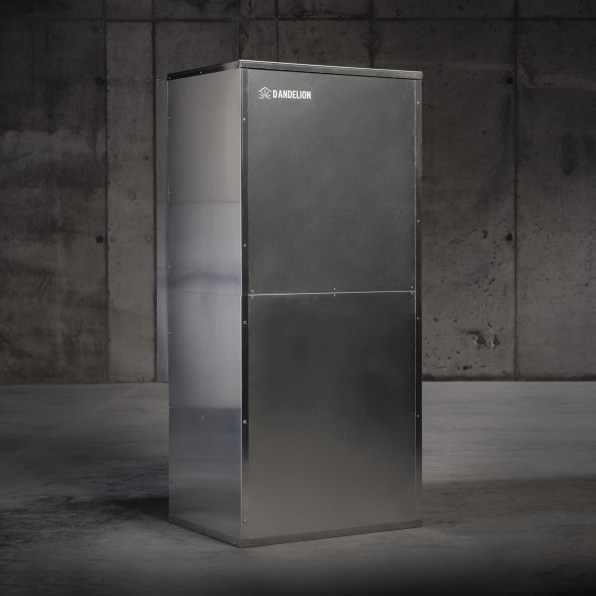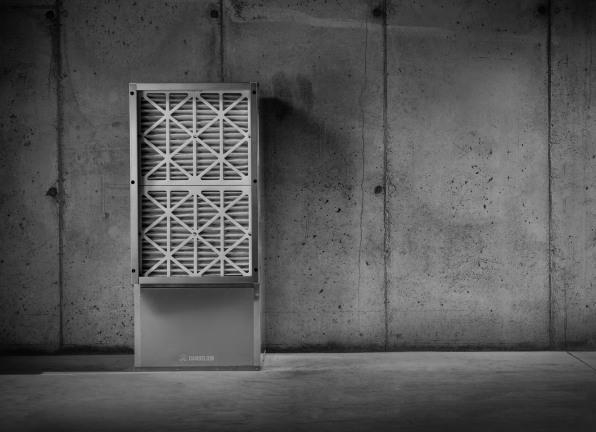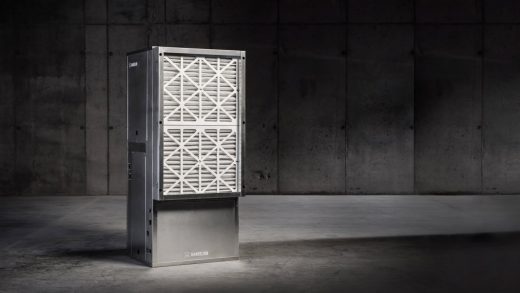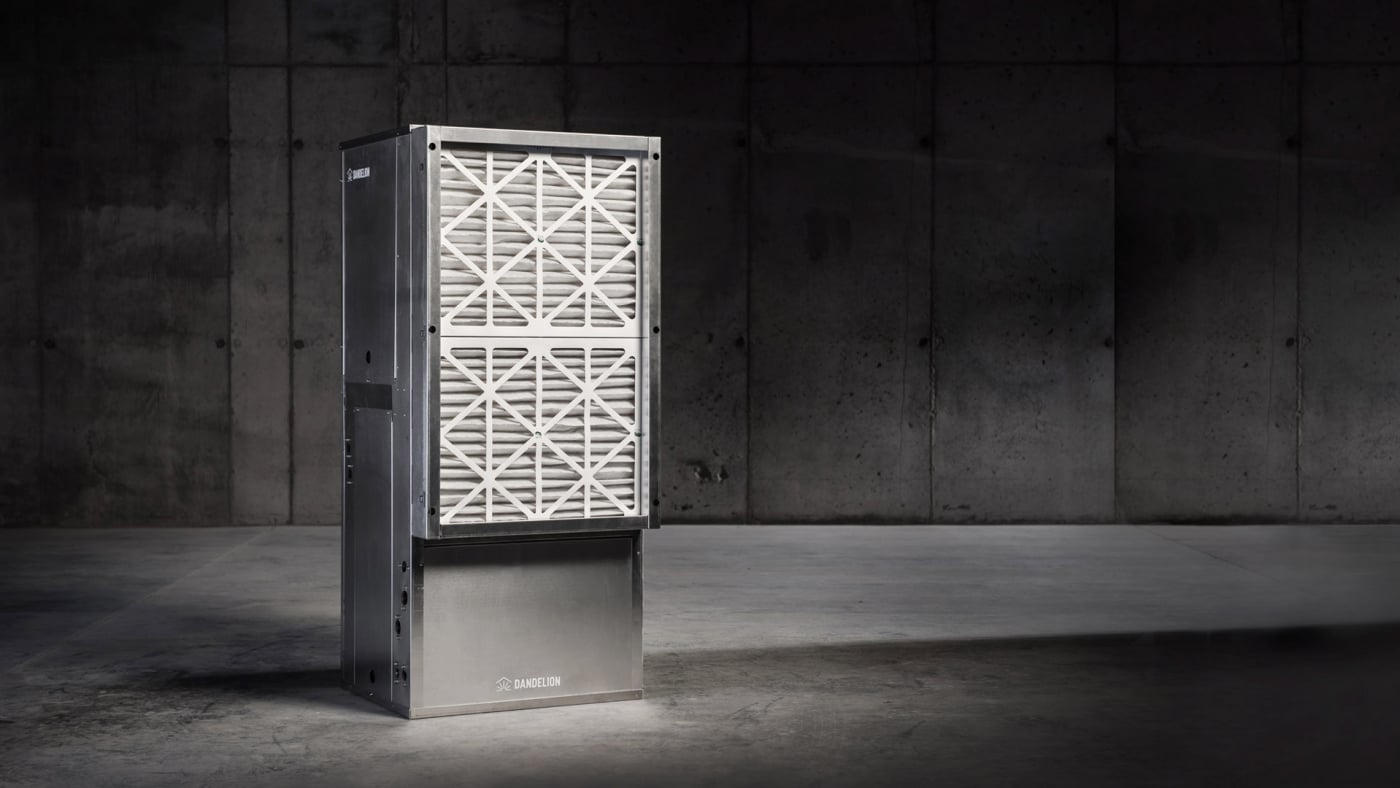Dandelion’s new system is designed to popularize geothermal heat
If you live in a typical old house in upstate New York–say, a 2,500-square-foot Victorian in Poughkeepsie–you might spend around $3,500 each winter buying fuel oil to heat your house and another $300 in the summer on air conditioning. A startup called Dandelion is making it cheaper for homeowners to switch to a geothermal system instead, saving on utility bills and cutting CO2 emissions.
The company, which initially began at X, Alphabet’s “moonshot factory,” launched a new product today called the Dandelion Air, a combination heating-and-cooling system that harvests energy from the ground in people’s backyards. Like other geothermal heat pumps, it takes advantage of the difference in temperature underground from the outside air–if the ground is warmer than the air, it’s possible to move heat from the ground inside to heat the house. In the summer, the system can pump warm air from the house outside and underground.

Geothermal systems aren’t new, but they’re rare, in part because installing one is typically a custom, expensive job. Dandelion’s tech-filled system is designed to be immediately cheaper than using fossil fuels, and durable, so it also avoids high maintenance costs over time. After it’s installed and turned on, the tech inside automatically checks to make sure that it’s been installed correctly. It also checks performance data over time, so that it can quickly find and fix any issues that might occur.
“Our mission is to help enable the widespread adoption of home geothermal,” says Dandelion CEO Kathy Hannun.
If someone has the cash to buy Dandelion’s system outright–$20,000, or about half the cost of a traditional geothermal installation–they can save more than 60% on annual heating and cooling costs. But the company also offers financing with monthly loan payments, so customers without extra money on hand can still make the switch. It’s a similar business model as solar leasing companies use to sell solar panels affordably; since the monthly payments are lower than traditional utility bills, it makes financial sense.
The company began testing the business model in 2017, when it launched in the Hudson Valley in upstate New York selling a geothermal system that was already on the market. By offering a standard system to all customers, rather than the custom offering of most geothermal installers, it was possible to make it more affordable.
“That transformation happened in solar already,” says Hannun. “Ten years ago, it was very small companies, niche companies, doing highly technical, very custom solar installations. Now you have companies like Solar City and Sunrun who are doing thousands and thousands of systems, and it’s just become very streamlined. [We’re] just bringing a similar mind-set to geothermal, which today is very much where solar was a decade ago. We want to sell a standard system.”
When the startup tested its new method of selling geothermal to see if New Yorkers would be interested in switching from fuel oil or propane heating, “overwhelmingly, the answer was yes,” she says. In parallel, the company worked on developing its own new heating and cooling system that launched today. The device is manufactured in a way that is as automated as possible to eliminate potential flaws. The complexity of the system is in the software, not the physical components, to make it less likely that anything will need repair. The components are arranged to be as simple and inexpensive to service as possible.

Though the technology is ideally suited for areas like the Hudson Valley, with a very cold winter climate, expensive heat, and cheap electricity to run the geothermal equipment, it could also be used elsewhere. Dandelion plans to expand to other markets, and Hannun believes that geothermal will eventually fully replace traditional heating and cooling in markets that get very cold in the winter. The shift to natural gas, she says, demonstrates how quickly a transition could happen.
“Natural gas in the last decade has replaced so many oil furnaces,” she says. “The uptake has been amazing. It just shows that if you provide an option that’s less expensive and more convenient, it’s very attractive, and people will switch. I know that heat pumps will be less expensive and more convenient. That’s why I think that it will happen.”
In a house like the Victorian in Poughkeepsie, a shift from oil heating and normal air conditioning to the new technology could save more than nine tons of CO2 emissions in a year, or the equivalent of taking two cars off the road. Over the 20-year lifetime of the system, it’s the equivalent of removing 40 cars. If someone also happens to have solar power, so the electricity used to run the equipment is also renewable, it’s possible to fully eliminate emissions from heating and cooling.
(26)



